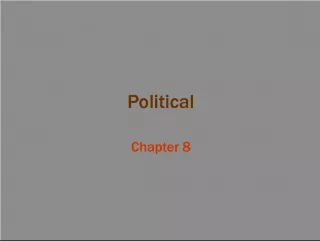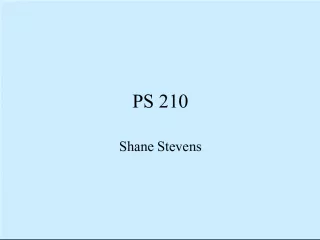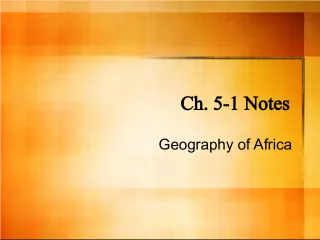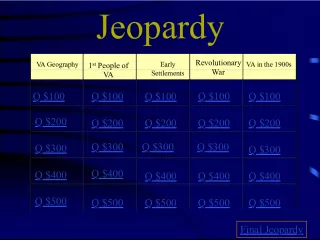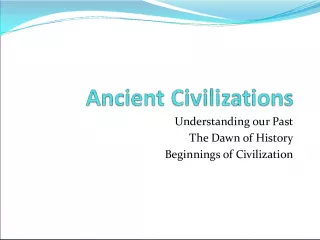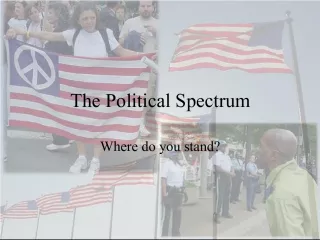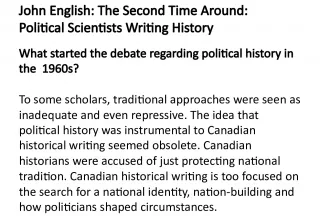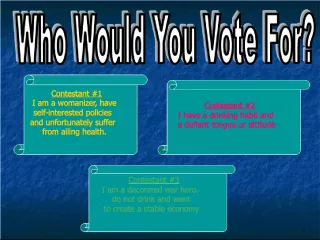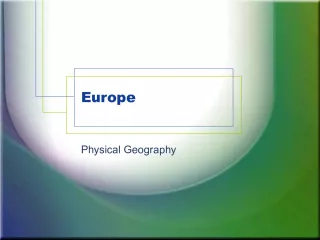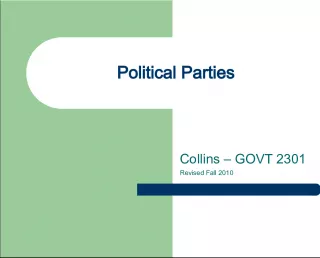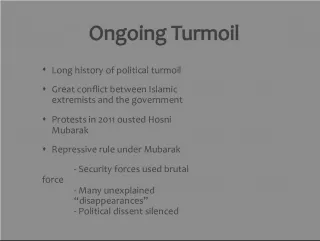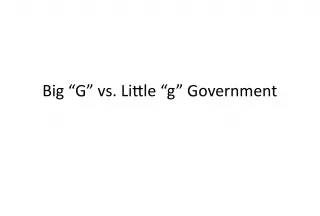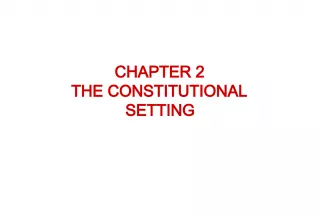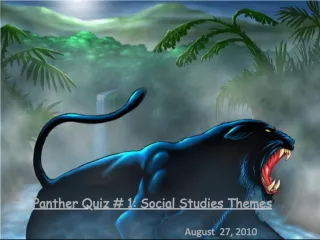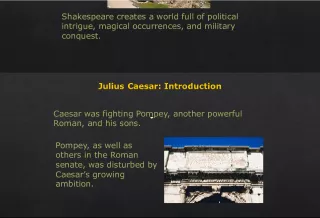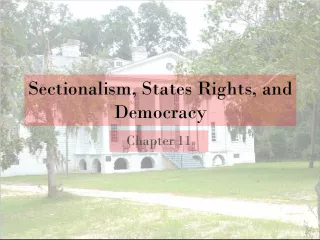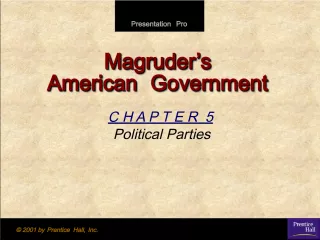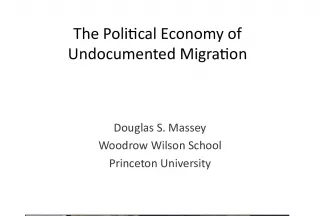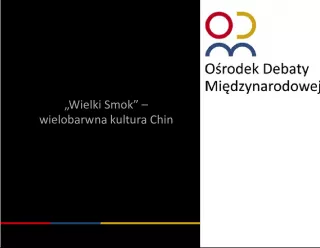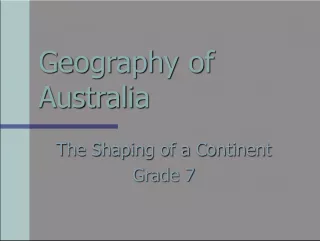The Alamo and the Political Geography of Tejas


Tejas, also known as Texas, was a land rich and desirable for its forests, soil for growing crops like corn and cotton, and vast grassy plains for grazing animals
- Uploaded on | 0 Views
-
 vaani
vaani
About The Alamo and the Political Geography of Tejas
PowerPoint presentation about 'The Alamo and the Political Geography of Tejas'. This presentation describes the topic on Tejas, also known as Texas, was a land rich and desirable for its forests, soil for growing crops like corn and cotton, and vast grassy plains for grazing animals. The key topics included in this slideshow are . Download this presentation absolutely free.
Presentation Transcript
Slide1The Alamo
Slide2Political Geography
Slide3Tejas• Land in Tejas was rich & desirable, with forests in the east, rich soil for growing corn & cotton, & great grassy plains for grazing animals. • It was home to Plains & Pueblo Native Americans & had few Spanish settlers. • In 1821, only about 4,000 Tejanos lived there. • Spain agreed to allow Moses Austin to start his own colony in Texas.
Slide4Settlement• Shortly after Austin arrived in Tejas in 1821, Mexico gained its independence from Spain, so Tejas became part of Mexico. It made Austin’s land grant worthless. • The Mexican government would allow Austin to keep his colony only if he agreed that new settlers must become Mexican citizens & Catholic. • He attracted 297 families, known as the “Old Three Hundred.” • He demanded evidence that each family was moral, worked hard, & did not drink. • By 1830, the population had grown to about 30,000, with Americans outnumbering the Tejanos six to one.
Slide5Conflicts• Tejanos & Americans did not get along for several reasons, including: – Americans did not want to learn Spanish – Official documents had to be in Spanish – Slavery was outlawed by Mexico in 1829 & Americans wanted slaves to help with their cotton farms – Tejanos believed Americans thought they were superior & deserved special privileges – Americans seemed unwilling to adapt to Mexican laws • The Mexican government sent troops to Tejas to force them to obey the laws.
Slide6What is the Alamo?• Mission San Antonio de Valero (later called the Alamo) was established in 1718, the first of five Spanish missions founded in San Antonio to Christianize and educate resident Indians. • Other Spanish missions in San Antonio included San Jose, San Juan, Concepcion, & Espada. • It was well over 100 years old when it became the focal point for the Battle of the Alamo. The Alamo will always be remembered and associated with that battle.
Slide8Texans Revolt• Texans talked about breaking away from Mexico, although Austin remained loyal. • Austin went to Mexico City to meet with General Lopez de Santa Anna, the Mexican President. They discussed changes to be made. • When Santa Anna didn’t agree to the changes, Austin protested & was jailed for one year. Santa Anna also sent troops to Texas. • Mexicans tried to seize the Alamo, but Texans fought back & the Mexicans fled.
Slide9The Fight for the Alamo• Leaders William Travis, James Bowie, Davy Crockett, & Juan Seguin, helped to lead the revolt. In 1836, Santa Anna’s troops surrounded San Antonio & began another siege of the Alamo. • • Travis wrote: “The enemy has demanded a surrender…I have answered the demand with a cannon shot & our flag still waves proudly from the walls. I shall never surrender or retreat.”
Slide10Colonel William Travis• He was a Texas military commander & fought at the Alamo at age 26. • He asked Texans for support & backup in defending the Alamo from Santa Anna’s troops. • He gave his life fighting at the Alamo.
Slide11James Bowie• He commanded the Volunteer Force at the Alamo. • He was disabled by pneumonia & he was confined to his cot at the time of his death. • He is known for his famous "Bowie knife" and his sometimes reckless sense of adventure.
Slide12Davy Crockett• He was a genuine frontiersman and Indian fighter who had no formal schooling. He served in the Tennessee legislature and killed 105 bears in one year! • When he lost a re-election against Andrew Jackson in 1835, he set out for Texas with a group of fellow adventurers, telling opponents "You can go to hell--I'm going to Texas!" • He died defending the Alamo.
Slide13Santa Anna• He led the Mexican rebellion against Texas. • After taking the Alamo, he moved against the forces being massed by Sam Houston, pushing them back toward eastern Texas. • The army settled into a siesta. And then the Texans struck. Santa Anna was captured the next day .
Slide16The Battle• The Mexicans set the Alamo on fire & the mission went up in flames & Texans fought to put it out. • The Alamo’s defenders held off the attack for 12 days. They refused to surrender. • On the 13 th day, Santa Anna ordered more than 1,800 men to storm the fortress. • Texans met attackers with a hailstorm of cannon & gunfire. Then it suddenly became strange & quiet. Texans had run out of ammunition.
Slide19Events of March 3, 1836• Day 13 of the siege: At 1 a.m. Mexican troops move towards their positions. At 5 a.m. Santa Anna gave the signal. The Mexican bugler sounded & they advanced on the Alamo. • Texans fought hard to defend their mission. There were heavy Mexican casualties (nearly 600 killed or wounded). The battle raged all through the Alamo. • By 6:30 a.m. the last firing was over. The Alamo had fallen... In the words of General Vincente Filisola, “By grapeshot, musketshot and the bayonet, they were all killed at last."
Slide21The Result• Men who had not died in the Battle were executed at Santa Anna’s command. • A total of 183 Alamo defenders died, although they let a few women & children live. • Susanna Dickinson, one of the survivors, was ordered by Santa Anna to tell the story of the Alamo to other Texans to discourage rebellion. The battle shocked Texans & showed them how hard they would have to fight for their freedom from Mexico. • With Santa Anna on the attack, Texans fled eastward. They were captured by Mexican forces, who executed more than 300 more.
Slide22The End
Slide23Sam Houston• Born in Virginia, Sam Houston was a statesman, politician, & soldier. • He moved to Texas, leaving the United States to protest Jackson’s Indian Removal Act. • Houston persuaded Texans to move eastward & led the battle against Santa Anna at San Jacinto.
Slide25Victory at San Jacinto• With support from Texans, Houston’s army doubled into more than 800 angry men, including Tejanos, American settlers, volunteers from the U.S., & many free & enslaved African Americans. • Santa Anna caught up with Houston near San Jacinto River & Texans advanced on the Mexican army with “the stillness of death.” • When close to Santa Anna’s camp, they raced forward, rifles ready, screaming, “Remember the Alamo!!!” • In 18 minutes, Texans killed more than half of the Mexican Army. Santa Anna signed a treaty giving Texas its freedom. With the Battle of San Jacinto, Texas was now independent.
Slide26The Lone Star Republic• Texans adopted the nickname Lone Star Republic & proclaimed themselves to be an independent nation. • They set up their own army & navy & elected Sam Houston as president. • Many Texans did not want to remain an independent nation & so Texas asked the U.S. Congress to join the union in 1836. • Congress voted against it, because many Americans feared conflicts with slavery & voting advantages. • It would be more than ten years before Texas would join the United States.
Slide27Texas Flag• The official state flag of Texas, called the Lone Star Flag, was adopted in 1845 when Texas became the 28th state of the United States. • The colors represent bravery (red), purity (white), and loyalty (blue). • The large white star was first used on Texas flags in the 1830's during the battles between Texas and Mexico.
Slide28The Aftermath• Without the Alamo there could have been no Battle of San Jacinto. • Without the Battle of San Jacinto, Texas could not have existed. • Without Texas, the westward expansion of the U.S. would have been thwarted. • Without the West, the U.S. would have remained an Atlantic power, and not risen to become a world power. • Without the U.S. as a world power, the world as we see it today would not exist.
Slide29Six Flags Over Texas• The amusement park was named for the six different nations’ flags which have governed Texas, including: France, Spain, Mexico, Republic of Texas, the Confederate States of America, & the United States of America.
